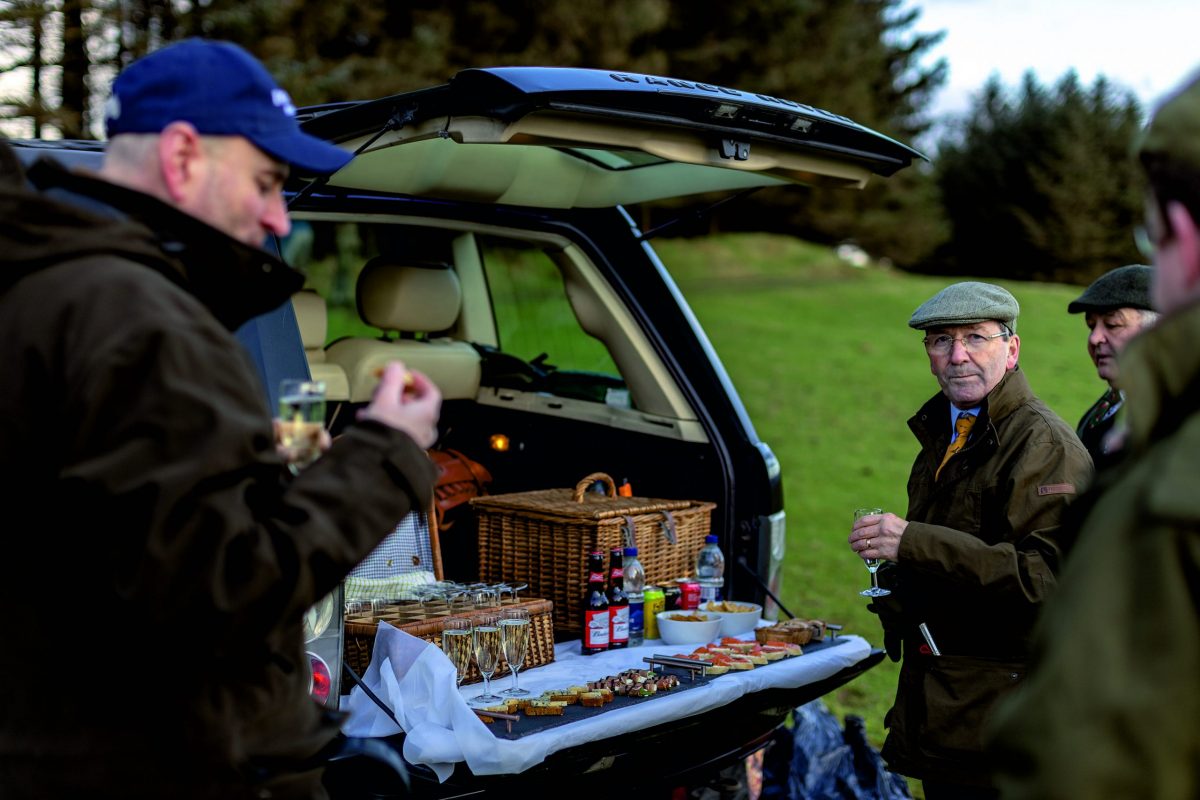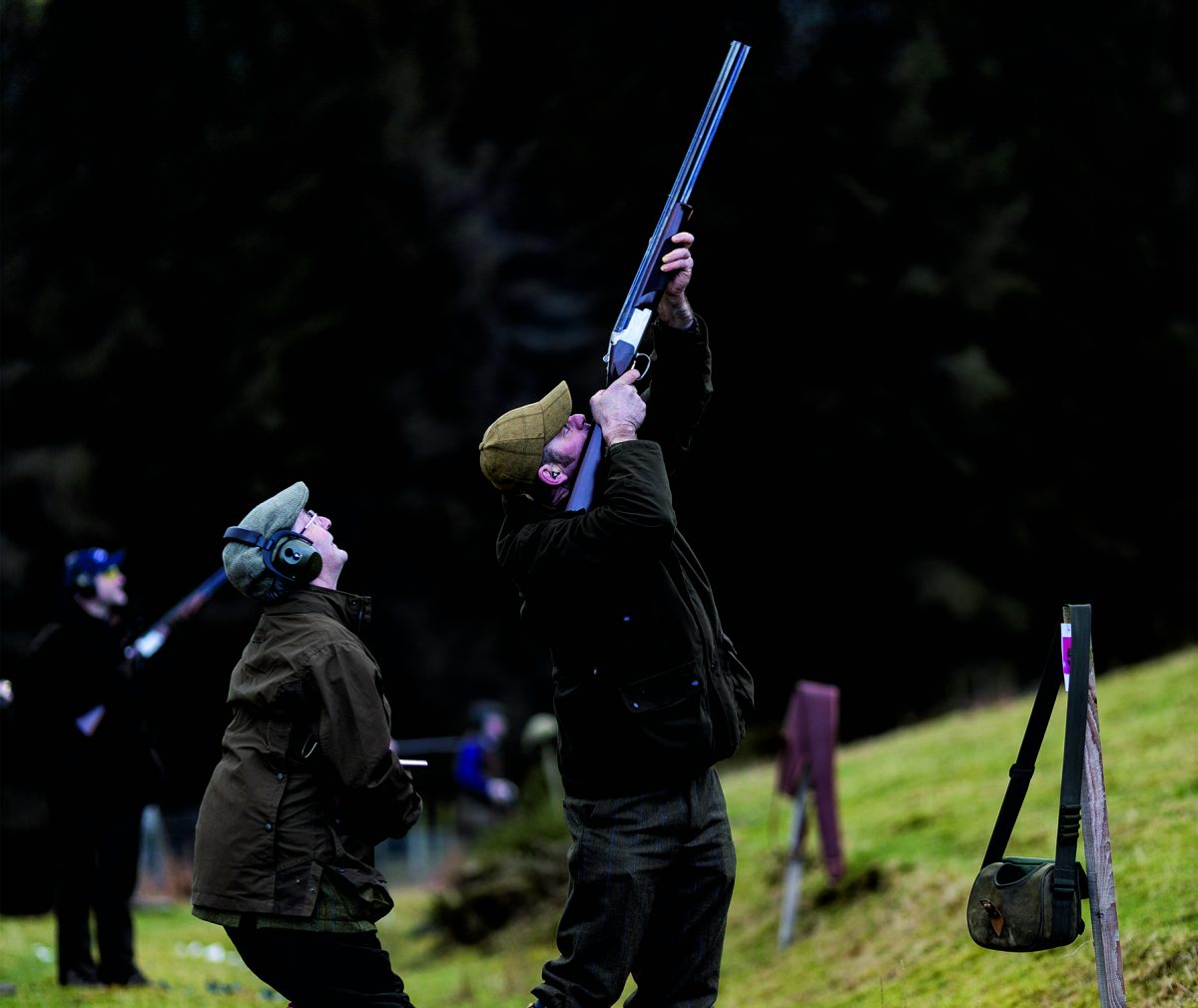Fitness is a key, so James Simon takes you through how to get through a long day’s shooting with a smile on your face and a spring in your step
You know the feeling. You’re only two-thirds of the way through an enjoyable day’s shooting yet suddenly you feel wearier than a sleep-deprived dormouse. This morning you had all the exuberance of a freshly lit firework on New Year’s Day, but now your energy is plummeting.
Not only does it feel like you’re walking through treacle, your mind’s gone all woolly on you too. You’re making silly mistakes and, worse still, missing targets that, earlier in the day, you would have smoked.
Endurance
Now that the longest days of summer are with us, let’s explore how you can enjoy them to the full and up your endurance levels for the coming autumn season.
Why do we get weary in the afternoon? It’s mostly due to our physiology, which makes us experience a slump around the 2pm to 4pm mark.
Every waking minute of the day the cells in our bodies start to build up adenosine, a chemical that, as it accumulates in the brain, becomes more powerful as an inhibitory neurotransmitter, suppressing wakefulness and promoting sleep. The build-up becomes significant after about seven to nine hours, synchronising perfectly with that familiar mid-afternoon flag.
What can be done? The longer you’re up the more tired you’re going to feel, so get some decent shut-eye. Caffeine inhibits the action of adenosine in the brain, which is why it’s such an effective stimulant — but we’ll be addressing whether caffeine is friend or foe later in this article. Our circadian rhythm drops our core temperature slightly in the afternoon too, triggering a release of melatonin, which is another chemical that makes us sleepy. To fight that drowsy feeling get active, which will raise your core temperature and slow its release. More on exercise later.
Hydration
Finally, fuelling and hydration have a vital part to play in keeping you energised, but eating a massive lunch that’s heavy in sugar and processed carbs will send you to sleep faster than reading the ISSF rulebook.
You guessed it, getting fit is a key part of being able to last the course, but if the prospect of becoming a gym bunny is about as appealing as having your teeth extracted, read on – because there may be a surprise in store.
In recent years short, sharp training sessions have gained popularity as a fitness cure-all, culminating in legions of ripped personal trainers evangelising high-intensity interval training (HIIT), on YouTube. HIIT is effective but it’s damned hard work, to the point that few of us are motivated enough to continue with it for very long.
Top athletes have been reassessing a more benign form of exercise, championed by Iñigo San-Millán, assistant professor at the University of Colorado School of Medicine. Known as Zone 2 training, the idea of the exercises is to go easy, rather than all-out, hell-for-leather max effort.

It is important to stay hydrated through a long shoot day
This is nothing new; it used to be called endurance training. The idea is that you exercise to about 60% to 70% of your maximum heart rate, which is effort zone two of the five zones athletes typically train within. You’ll still be able to hold a decent conversation, enjoy the scenery, think about stuff other than pain and wear a smile, not a permanent grimace.
Benefits include higher cardiac efficiency, increased VO2 max, the ability to sustain higher aerobic capacity without building up lactic acid, fat burning, triggering of the parasympathetic nervous system for better recovery and, last but not least, increased endurance performance.
Zone 2 training is both easy and accessible. You don’t need a gym membership, special equipment or clingy Lycra, just a bit of drive. It doesn’t require a heart-rate monitor either – provided you’re getting a little bit breathless, you’ve hit the spot. Cycling, swimming, gentle rowing and light jogging are all fantastic Zone 2-type exercises, but the one that’ll appeal to many Sporting Gun readers is hill walking.
OK, there is a catch, to train effectively in Zone 2 you need to work for long periods of time. Professional athletes will spend up to 70% of their training time in zone two, which could mean three full days a week. For the rest of us, two or three purposeful multi-hour walks a week should see your endurance levels rise significantly.
Eat, drink, shoot better
Every porky pound you carry around is going to sap your energy. Conversely, if you’re underweight due to malnourishment, you’ll also struggle to enjoy a long day.
Some readers will already be a healthy weight, but let’s be realistic, Shots are just as susceptible to the current obesity crisis as anyone else, with many better able to navigate their way around an all-day breakfast than a sustainable nutrition plan.
Provided you’re otherwise healthy, we recommend a back-to-basics approach to weight management. You already know the drill. Eat three balanced meals a day, reducing unhealthy treats.
Don’t skip breakfast but opt for food with a low glycaemic index (GI) such as porridge, with a small amount of fruit to boost your five-a-day target. For your main meal, half your plate should be vegetables – a great source of fibre and micronutrients – a quarter should be protein and the rest can be carbs. Don’t skimp on the protein, and consume modest amounts of healthy fats such as olive oil to maintain muscle mass and good body functions.

Avoid over-processed, sugary snacks
Highly refined and processed foods, such as fast food, sugary drinks and cakes, must be regarded as treats rather than meals but, that said, don’t slice the fun out of eating.
On the day, up your intake of low-GI carbs and consider snacking on medium-GI treats such as bananas to sustain your energy levels. Eating chocolate will give
you a satisfying boost, quickly followed by a ghastly crash, so avoid it if you can.
It’s also important to keep hydrated throughout a tough day, but don’t overdo it or you’ll spend most of your time desperate for a wee, which is never a good look and rarely conducive to hitting anything. The main ingredient in most sports drinks is marketing hype, so save your money and stick to water.
Caffeine can be an effective performance enhancer that aids concentration and alertness but over time, with regular consumption, we get immune to its stimulatory effects. Save it for important shoot days and, even then, know the amount that’s going to get you super-dialled rather than reduce you to a jittery anxious wreck. Caffeine can also play havoc with sleep patterns, so avoid the awful spiral of coffee dependency at all costs.
Get enough sleep
Without a lengthy visit to the land of nod your cardiovascular health is compromised and you won’t be able to recover effectively from physical exertion. Sleep enables your heart to rest and your cells and tissues to repair. As already mentioned, a disturbed night in the sack will also impair your body’s ability to reduce levels of adenosine.
It gets worse. When we sleep our brains forge new pathways to consolidate memories into learned skills so, without enough sleep, your shooting will never improve. A poor night’s sleep has a drastic effect on cognitive function too, making everything that much harder and more tiring.
Insomnia is a complex beast but many sleep issues react positively to good exercise and dietary habits. If you are a sufferer, be consistent with the times you go to bed and get up, cut caffeine, avoid alcohol, put your phone or tablet away well before bedtime and try to reduce stress.
If you’re desperately tired during a long day’s shooting try retreating to your car or, better still, camper van for a power nap. The jury’s out on whether these little sleeps make insomnia better or worse, but many people find they bring relief. For best effect, keep them short, 20 minutes is about right, and make them a consistent part of your day.

Ensure you are wearing the right clothing for the conditions: layers are always a good bet
Stress and focus
Stress fatigues you fast, as well as negatively impacting your sleep, recovery, weight and the ability to stave off illness. Most of us spend too much time with our sympathetic nervous system triggered, rather than the parasympathetic, which means we’re in heightened ‘fight or flight’ mode rather than ‘rest and digest’. Not only is this exhausting, but because our poor, over-stimulated brains are constantly scanning for threats, it’s impossible to focus on the task at hand, which means fewer hits and more stress.
Stress is prevalent on the competition stands, so how do the pros cope? Most use mindfulness techniques to improve focus. These can take the form of quite elaborate pre-shot routines, but you can try simple breath-based mindfulness practices at home, such as square breathing.
Working with the breath brings us into a calmer parasympathetic state and, with practice, it builds strong connections in the prefrontal cortex of the brain, which enables us to focus more effectively.
Most people find noisy environments stressful too, so consider buying electronic hearing protection that blocks out the bangs but enables you to hear conversation. You’ll be able continue wearing them even when it’s not your turn to shoot.
It’s prudent to wear clothing that’s appropriate for the conditions, but don’t overdo it. I’ve lost count of the number of times I’ve seen Shots scarlet-faced and sweating because they’re overburdened with too many layers of heavy, old-fashioned fabrics. In the summer, you risk suffering from dehydration and in the colder months that build-up of sweaty moisture will chill you to the bone.
If you’re going to be standing at a peg for any length of time, or in a clay stand, that’s when the chill sets in, so make sure you layer up accordingly.
High-tech tweed
At the other extreme, walked-up grouse can find you wandering the heather for hours in the cold and wet, but it’s a strenuous activity so you’ll build up heat climbing the first slope. The solution is to buy modern, breathable clothing, including ‘technical tweed’, which will keep your temperature regulated without weighing you down.
The same goes for gear. Shooting accessories – everything from gunslips to loaders’ cases – are heavy, so only bring what you really need and no more.
(Click here for our advice on products for shooting like best smocks, best shooting shirts, best ear defenders, best walking boots or best tweed jackets).
You may have noticed that many of these solutions work in synergy, forming a virtuous circle of improved endurance. Adopting just a few will help you through the long days – time flies when you’re having fun.




